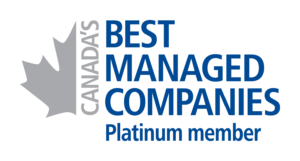Information Is Key – The Changing Role of the Warehouse

The role of the warehouse is changing. Is your 3PL providing the platforms to successfully manage your supply chain? Gone are the days when most customers are just looking for a space to store inventory. 21st century logistics service providers are supporting customers on a global scale. Globalization creates a new set of logistical challenges for both the customer and the logistics provider (3PL). Companies’ logistics departments need to partner with 3PL providers that operate state-of-the-art, robust and flexible WMS and TMS systems. These platforms provide information and data that allows the logistics service providers to run their business and at the same time be cost efficient and diligent in keeping costs reasonable for the customer. Customers must be able to have visibility 24/7 to their inventory and shipping status to plan production, meet their client’s needs and avoid pitfalls such as fines, penalties and be able to manage risk mitigation.
As customers are located globally, information must be easily accessible, wherever in the world the customer may be. It is critical to be timely received from the 3PL any day or time.
In today’s fast paced environment, most managers are multi-tasking and need to be able to make informed decisions based on real time information to insure that their customers’ needs are constantly met or exceeded. This requires employing continuous improvement processes.
5 Ways to Improve and Benefit
- Employ a WMS, TMS system that provides real-time information and captures data that automates a multitude of processes. These interactive systems lead to a reduction of costs and increased accuracy. Clients need to be able to retrieve information in real time in order to plan their production and deliveries. In addition, the 3PL’s systems also should provide data to their clients’ finance, sales & marketing and compliance departments to ensure the clients continually meet their business objectives.
- Logistics Service providers should align with innovative partners. Through rigorous vetting, they must determine those suppliers whose capabilities they can tap into, and they will provide the right services and strategies to improve their current information flow. By leveraging their partner’s capabilities the logistics service provider can provide a broad range of solutions to meet constantly growing customer’s needs.
- Involve employees and integrate all departments and stakeholders in the information process. This is so very easily overlooked on a regular basis. Because it is viewed as a ‘given’ many providers unintentionally neglect to constantly include all stakeholders in their communications. The Logistics Service provider needs to provide relevant information to their clients finance, sales, marketing, production and logistics department. Creating metrics that link the floor level to customer service to the customers’ needs and the service providers’ objectives should be employed.
- Increase transparency. Real time information increases the transparency between the logistics service provider and their clients. Waste, mistakes and even fraud and shrinkage are on-going supply chain problems that can be fixed with the right system. Information flow allows a mutually beneficial business partnership between all stakeholders.
- Logistics service providers in today’s global business world need to communicate interactively with their clients no matter where the client’s offices are located. In order to be significantly effective, many platforms must be utilized e.g: Twitter, Youtube, Pinterest, Facebook, Whatsapp, Wiebo are just a few examples you should use.
Whether you are looking for help in choosing the right logistics provider or advice on how to make your supply chain work more efficiently, hopefully these tips can help.
{{cta(‘62372d90-2392-442b-9976-e34a80903adc’,’justifycenter’)}}


